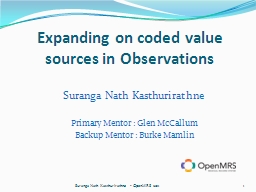PDF-Badri Nath Rutgers University badrics
Author : cheryl-pisano | Published Date : 2015-03-05
rutgersedu 1 Chubby 2 Cassandra Services deployed over a cluster Thousands of machines over 100s of racks Deployed over cheap hardware Need to be highly available
Presentation Embed Code
Download Presentation
Download Presentation The PPT/PDF document "Badri Nath Rutgers University badrics" is the property of its rightful owner. Permission is granted to download and print the materials on this website for personal, non-commercial use only, and to display it on your personal computer provided you do not modify the materials and that you retain all copyright notices contained in the materials. By downloading content from our website, you accept the terms of this agreement.
Badri Nath Rutgers University badrics: Transcript
Download Rules Of Document
"Badri Nath Rutgers University badrics"The content belongs to its owner. You may download and print it for personal use, without modification, and keep all copyright notices. By downloading, you agree to these terms.
Related Documents













